Greenwich Street in Tribeca is currently undergoing a significant transformation. For those navigating the area, the ongoing construction might seem extensive and perhaps a bit disruptive. This article delves into the details of the Greenwich Street reconstruction project, offering an updated timeline and a clearer understanding of the work being done beneath the surface. We gained exclusive insights from the Department of Design and Construction (DDC) to bring you the most current information on this vital infrastructure undertaking.
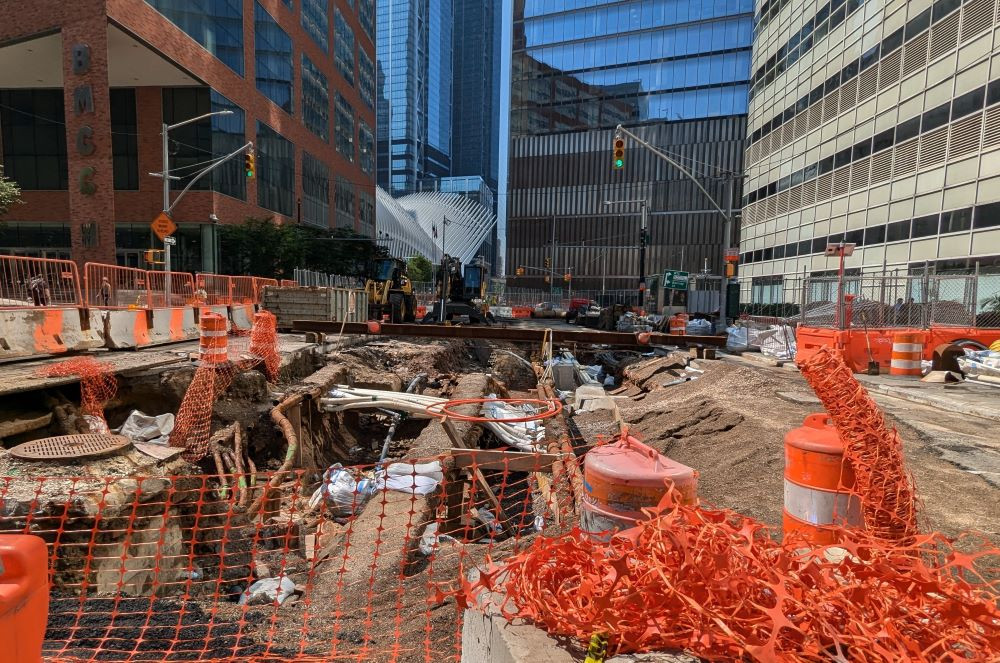 Construction work underway on Greenwich Street, showcasing heavy machinery and excavated street sections
Construction work underway on Greenwich Street, showcasing heavy machinery and excavated street sections
Updated Timeline for Greenwich Street Reconstruction
For residents and businesses in the vicinity, understanding the project’s timeline is crucial. Here’s the latest schedule directly from the DDC:
- Murray Street to Barclay Street Section: Anticipated Completion Date – August 2026
- Murray Street to Chambers Street Section: Anticipated Start Date – October 2025
- Murray Street to Chambers Street Section: Anticipated Completion Date – November 2026
Initially slated as a five-year project commencing in May 2022, the reconstruction has faced revisions to its timeline. Originally, the stretch from Barclay to Murray Street was expected to be completed by May 2024. However, the complexities of coordinating with various city and non-city agencies managing underground infrastructure have led to necessary adjustments.
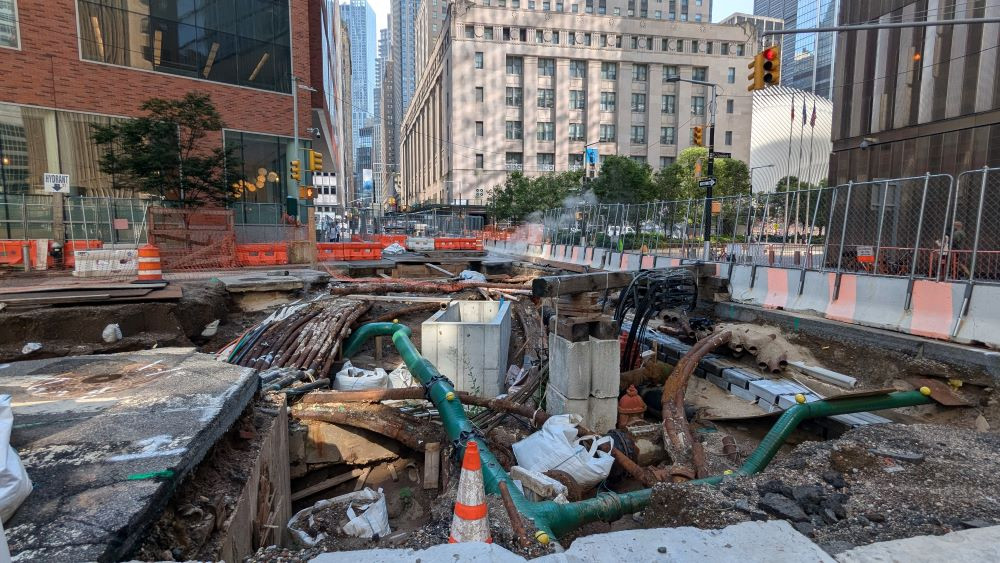 An aerial perspective of Greenwich Street construction, illustrating the project's scale and impact on the urban landscape
An aerial perspective of Greenwich Street construction, illustrating the project's scale and impact on the urban landscape
Scope of the Project: More Than Just Roadwork
What began as a Department of Transportation (DOT) roadway reconstruction project has evolved into a much more comprehensive initiative. The city recognized the critical need to address aging watermains, some dating back to the 1880s, which had received only temporary fixes after 9/11. This expansion broadened the project’s scope by approximately 90%, according to the DDC.
The current undertaking is a complete overhaul. It encompasses replacing the roadbed, curbing, and crucially, the antiquated watermains. Furthermore, the project involves strategically relocating various utilities within the roadbed, with utility companies also using this opportunity to implement their own upgrades.
Ian Michaels, Director of Public Information for the DDC, emphasized the long-term vision: “The idea is to not come back here for a century. This is the most the city can do to fix a neighborhood.” This project aims to provide lasting infrastructure improvements for Greenwich Street and the surrounding area.
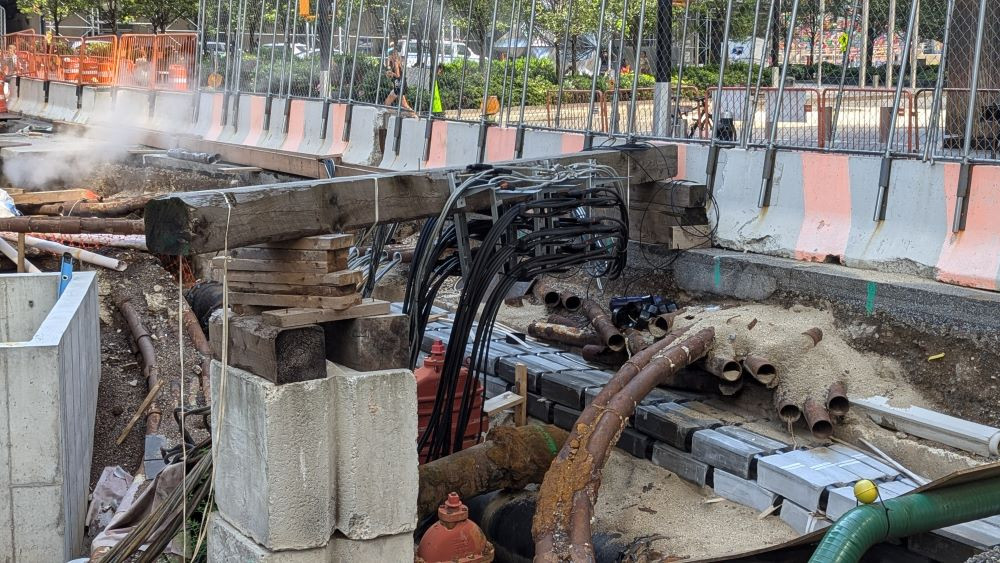 Close-up view of excavated Greenwich Street, revealing layers of underground utilities and infrastructure requiring replacement
Close-up view of excavated Greenwich Street, revealing layers of underground utilities and infrastructure requiring replacement
Complex Coordination and Unexpected Delays
Peter Roloff, the project’s resident engineer, detailed the intricate challenges involved. A significant source of complexity lies in the presence of ConEd’s extensive infrastructure, including gas, electric, and steam pipes and cables, along with a substation beneath 7 World Trade Center. Adding to this is the Empire City Subway, a Verizon subsidiary, which manages the conduits for Verizon’s cables.
Coordination between these entities and city projects is paramount, yet their schedules often don’t align seamlessly. Unforeseen issues can also arise when excavating, requiring ConEd to assess and address unexpected findings, which can further delay the city’s work. As an example, the DDC experienced a significant delay awaiting ConEd to de-energize cables to safely proceed with work in August, a wait that began in April. ConEd prioritized grid stability during peak summer heat, delaying the power shutdown until energy usage decreased. This single issue resulted in a delay of approximately five to six months.
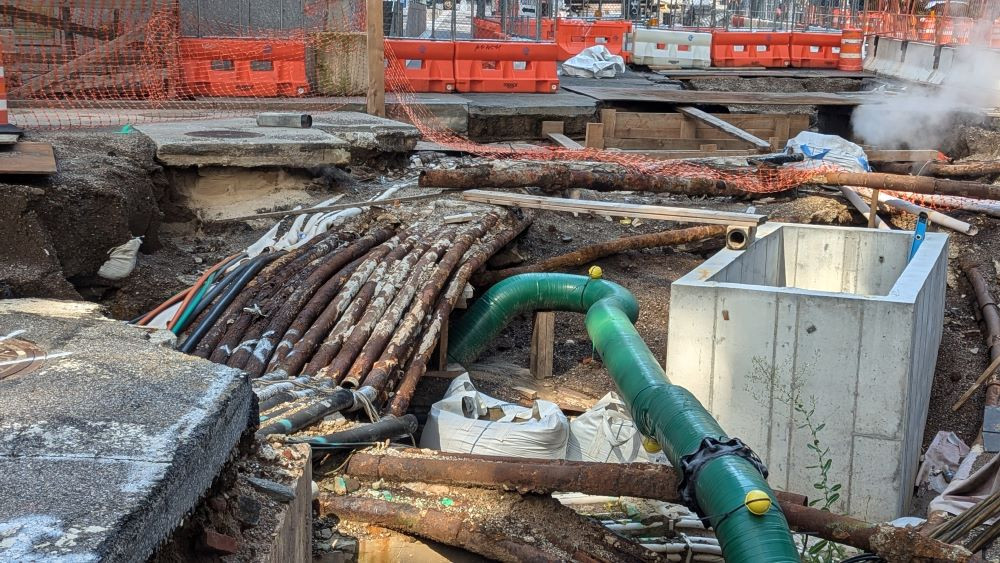 Workers inspecting large, rusty pipes extracted from beneath Greenwich Street, highlighting the age and condition of the infrastructure being replaced
Workers inspecting large, rusty pipes extracted from beneath Greenwich Street, highlighting the age and condition of the infrastructure being replaced
Keeping Traffic Flowing: An Added Challenge
An additional layer of complexity is the DOT’s requirement to maintain traffic flow on Greenwich Street throughout the project. Walkman Wong, DDC’s Assistant Commissioner for Manhattan infrastructure and construction, highlighted this constraint: “We did this project on Staten Island, and we would do a block in a week. It’s a little different here.” Maintaining traffic necessitates a more phased and meticulous approach, impacting the overall project timeline compared to projects where street closures are more feasible.
Adding to the unknowns, the steel pipe that ConEd is replacing dates back to the turn of the 20th century. According to Roloff, “They have no idea what they are going to find till they open it.” Furthermore, the high-voltage cables from the substation require a careful, sequential shutdown process for relocation, adding another layer of complexity. (Gas mains, identified by their green color, offer more flexibility in relocation, while water mains require straight alignments.) Interestingly, ConEd is not replacing the old steam pipes at this time, raising questions about potential future construction needs.
 A large vertical image showing new, large diameter water pipes staged for installation on Greenwich Street, contrasting with the older infrastructure
A large vertical image showing new, large diameter water pipes staged for installation on Greenwich Street, contrasting with the older infrastructure
Modernizing Infrastructure for the Future
The project includes replacing two existing 20-inch water mains, originally installed redundantly. The Department of Environmental Protection (DEP) is overseeing the replacement of these aging pipes. The new 20-inch watermains, seen staged on the street, represent a significant upgrade.
Moreover, Verizon is proactively installing numerous empty conduits to accommodate future needs, aiming to minimize the necessity for repeated excavation in the future. These PVC pipes, encased in concrete, are a forward-thinking aspect of the project.
The DDC’s willingness to provide an on-site tour underscores their commitment to transparency and public understanding. As Wong stated, “We love what we do and we love explaining the problems.”
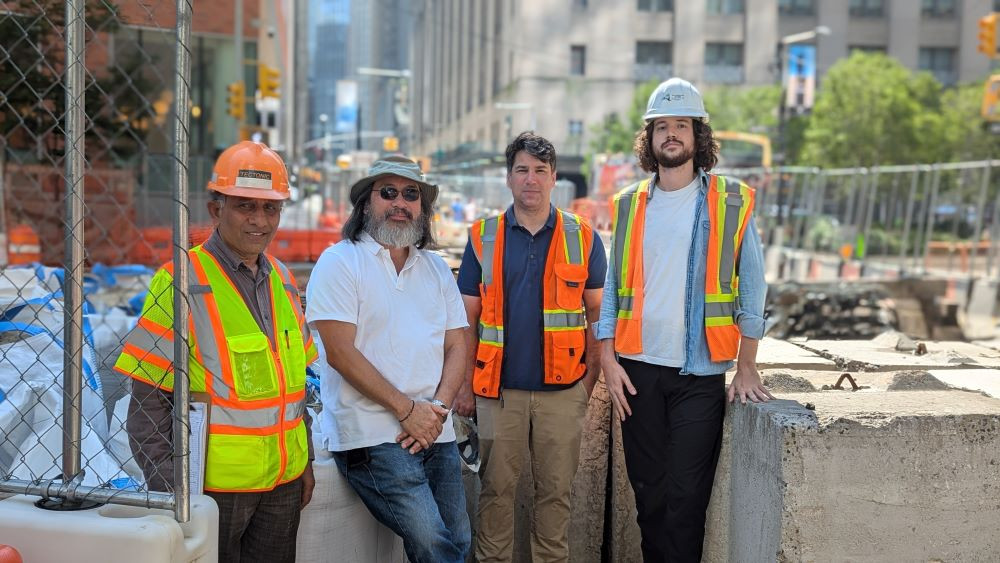 Group photo of DDC and Tectonic Engineering personnel at the Greenwich Street construction site, emphasizing the collaborative effort behind the project
Group photo of DDC and Tectonic Engineering personnel at the Greenwich Street construction site, emphasizing the collaborative effort behind the project
(Pictured from left to right: Ashok Dhaduk, senior inspector from Tectonic Engineering; Peter Roloff, DDC resident engineer; Walkman Wong, DDC Assistant Commissioner; and Phil Stafford, DDC community construction liaison.)
In a historical aside, Roloff recounted a previous project on Peck Slip in 2007 where a wooden water main, dating back to the era of Central Park’s development and bound with leather straps, was unearthed, showcasing the long history of underground infrastructure in Lower Manhattan.
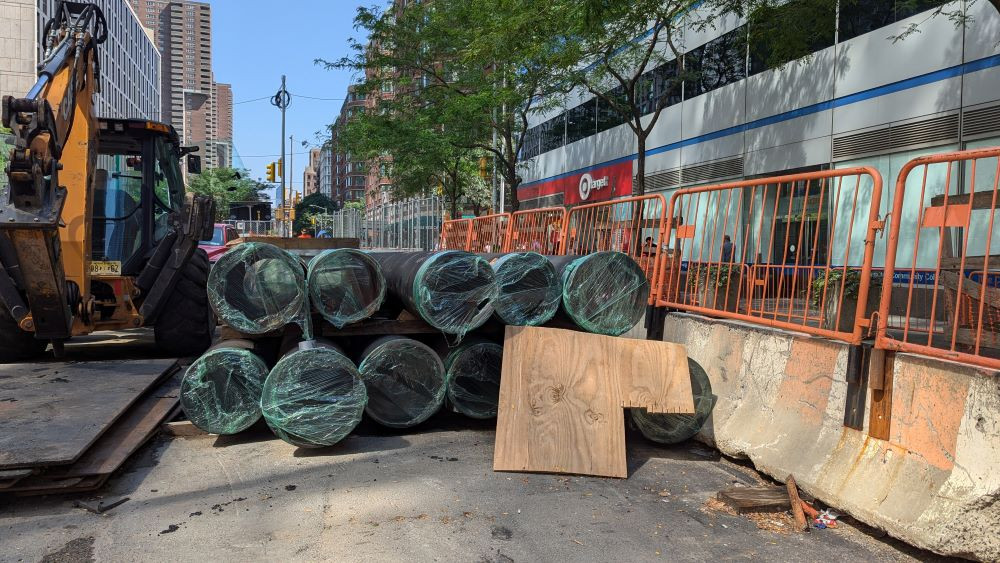 A historical image of a wooden water main discovered during excavation, illustrating the evolution of infrastructure technology
A historical image of a wooden water main discovered during excavation, illustrating the evolution of infrastructure technology
The Greenwich Street Reconstruction project, while complex and subject to delays, represents a crucial investment in Tribeca’s infrastructure, aiming for long-term reliability and modernization for decades to come.
